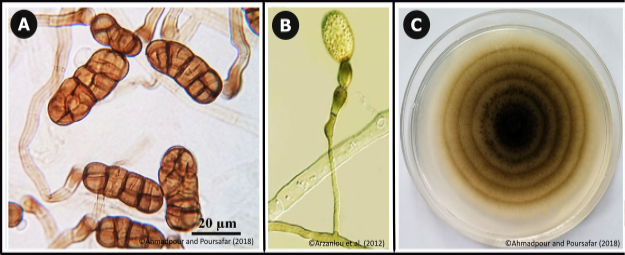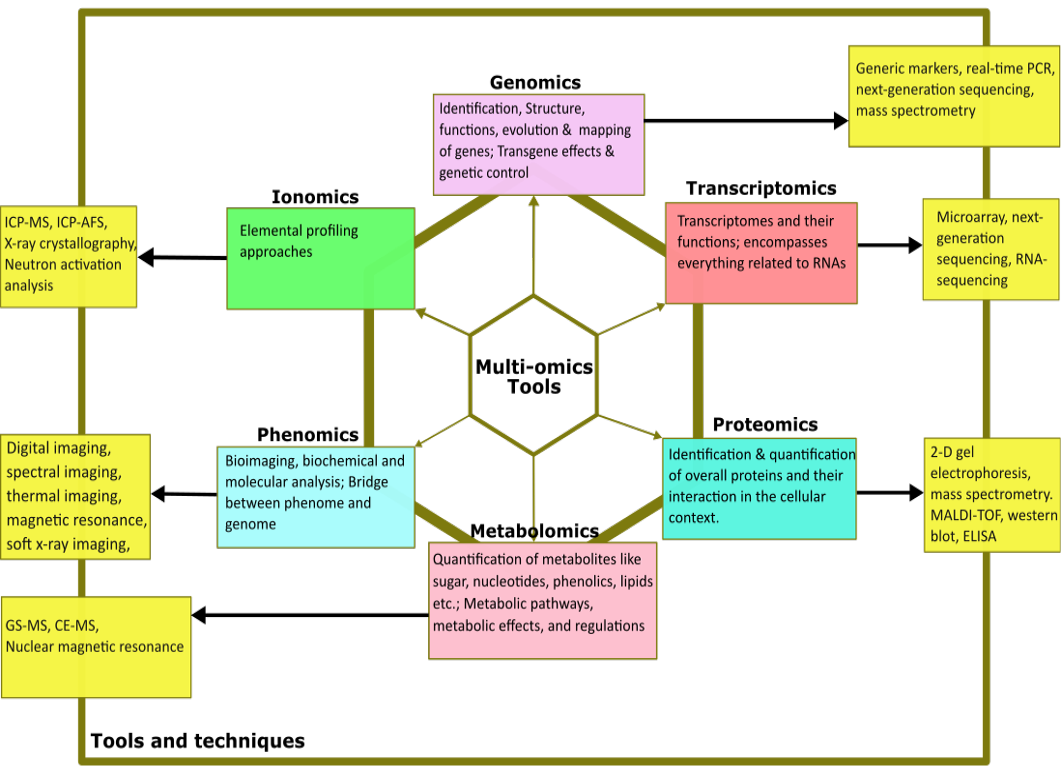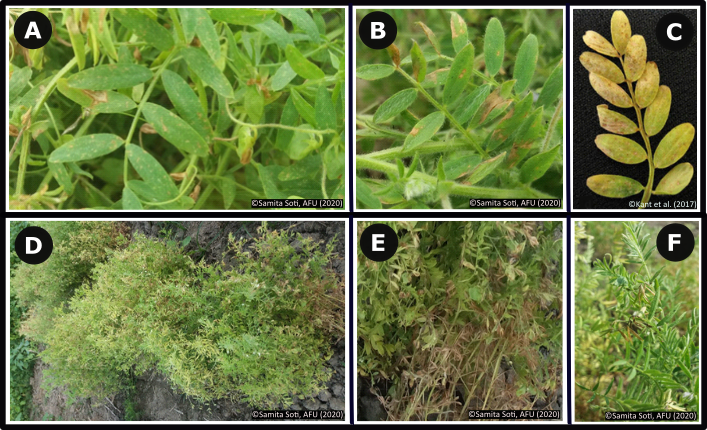Current Insights on Stemphylium Blight of Lentil with its Management Strategies
Shishir Sharma* and Laxmi Prasad Joshi
Conidia and conidiophore of S. botryosum (A and B). Colony morphology of S. botryosum (C).
Conidia and conidiophore of S. vesicarium (A and B). Colony morphology of S. vesicarium (C).
Conidia and conidiophore of S. solani (A and B). Colony morphology of S. solani (C).
A summary of ‘Omics’ strategies for the development of SB resistant cultivars in lentil.
Appearance of tiny Pin head size spots scattered over the leaf surface (A), Spreading chlorotic lesions (B), Whole leaf become chlorotic and dry (C), Infected plants showing completely brightening lower leaves (D,E) and Infected twigs with fishing hook like appearance (F).












